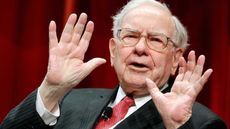Stocks Back From the Bailout
I've made the stocks of both AIG and GM top-ten holdings because I see them as classic values.

When my client Larry learned that I had purchased shares of American International Group (symbol AIG) for him, he shot me an e-mail. “Is this the same AIG that almost destroyed the world?” “Absolutely,” I replied. A follow-up e-mail asked: “Is this the same AIG that makes investors want to puke?” “You got it,” I said.
AIG isn’t the only bailout play in my portfolio. I also own General Motors (GM). I’ve made the stocks of both companies top-ten holdings because I see them as classic values. Their businesses are performing far better than investors think, yet they are loathed because of how they performed in the past.
Bailout Fallout
The political climate may have something to do with the stocks’ low prices. Millions of Americans revile the federal government. Even more hate bailouts. (Ameriprise, with its finger to the wind, has Tommy Lee Jones bragging in TV ads that the company has never taken a bailout.) Given these strong feelings, do you think Tea Party fanciers are lining up to buy AIG and GM? No way.

Sign up for Kiplinger’s Free E-Newsletters
Profit and prosper with the best of expert advice on investing, taxes, retirement, personal finance and more - straight to your e-mail.
Profit and prosper with the best of expert advice - straight to your e-mail.
Some reasons for avoiding these stocks make sense. Analyst Gloria Vogel, of Drexel Hamilton, an investment banking and brokerage firm, says institutional investors worry about the large amount of AIG stock that the feds own (the Treasury holds 70% of AIG and 32% of GM): “They say, ‘Why should I buy now?’ But that concern and other worries are already baked into the price.”
And then some, I would argue. No one, understandably, wants to be the moron who buys AIG and GM before an announcement of a government sale tanks the stocks. Try explaining that one to your boss. Indeed, AIG shares fell nearly 4% on March 8, when the Treasury sold $6 billion worth of AIG stock (AIG bought half the offering).
Actually, the risk posed by the Treasury unloading more AIG shares may be less than it seems. CEO Robert Benmosche said recently that AIG could end up buying back an even bigger chunk of its stock from the Treasury. By Election Day, AIG should have billions of dollars to devote to such buybacks.
Buying back shares from Uncle Sam would be a win-win-win for AIG. First, it would diminish the overhang of shares that the Treasury could sell. Second, given that AIG, at $28, trades at a 49% discount to book value (assets minus liabilities) of $55.33 per share, every share it buys back makes its remaining shares more valuable. Third, a buyback would help change market perception.
AIG’s prospects are improving as it raises insurance rates. Its SunAmerica asset-management unit is once again seeing money flow into its funds. Fairholme Fund’s Bruce Berkowitz, who had 26% of the fund’s assets in AIG at the end of 2011, says the company is capable of earning $4 per share. Not bad for a $28 stock.
Two final points: The media may mock AIG, but 97% of Fortune 1000 companies still use its services. As for the financial-products unit, which did almost destroy the world, about 90% of its derivative exposure is gone, and most of what remains is used for low-risk hedging activity or should retain or increase its value over time.
Meantime, GM, often derided as “Government Motors,” has regained its position as the world’s top carmaker. GM’s joint ventures in China are performing well and are worth $10 per share, nearly 40% of GM’s $26 share price. GM has 13% of all new-car sales in Brazil, Russia, India and China—the highest percentage of any carmaker.
Granted, GM used to be a lousy company, but times have changed. Hourly costs per worker have plunged by 30%. Some smart people have replaced the dunderheads who ran the company into the ditch. And the stock sells for less than six times the $4.59 per share that analysts, on average, expect GM to earn in 2013.GM and AIG are clearly cheap, but many investors think the past is always prologue. Not so this time.
Columnist Andrew Feinberg manages a New York City–based hedge fund called CJA Partners.
ORDER NOW: Buy Kiplinger’s Mutual Funds 2012 special issue for in-depth guidance on the only investments you need.

-
 Strategies to Optimize Your Social Security Benefits
Strategies to Optimize Your Social Security BenefitsTo maximize what you can collect, it’s crucial to know when you can file, how delaying filing affects your checks and the income limit if you’re still working.
By Jason “JB” Beckett Published
-
 Don’t Forget to Update Beneficiaries After a Gray Divorce
Don’t Forget to Update Beneficiaries After a Gray DivorceSome states automatically revoke a former spouse as a beneficiary on some accounts. Waivers can be used, too. Best not to leave it up to your state, though.
By Andrew Hatherley, CDFA®, CRPC® Published
-
 3 Stocks Warren Buffett Is Buying (and 7 He's Selling)
3 Stocks Warren Buffett Is Buying (and 7 He's Selling)Warren Buffett Warren Buffett upped Berkshire Hathaway's holdings in the oil patch and trimmed its Apple stake, among other moves in Q4.
By Dan Burrows Last updated
-
 Stock Market Today: Stocks Close Higher as Tesla Extends Win Streak
Stock Market Today: Stocks Close Higher as Tesla Extends Win StreakThe electric vehicle maker extended its longest daily win streak since early 2021 after announcing a new deal with GM.
By Karee Venema Published
-
 9 Best Green Energy Stocks to Buy Now
9 Best Green Energy Stocks to Buy NowThe future for renewable energy is bright, and these green energy stocks are poised to profit on the growing trend toward sustainability.
By Deborah Yao Published
-
 Stock Market Today: Stocks Gain Ahead of Fed Meeting
Stock Market Today: Stocks Gain Ahead of Fed MeetingExxon Mobil (XOM) and General Motors (GM) both popped after reporting solid earnings.
By Karee Venema Published
-
 One Stock Warren Buffett Is Buying (and 13 He's Selling)
One Stock Warren Buffett Is Buying (and 13 He's Selling)Warren Buffett Warren Buffett's Berkshire Hathaway was a net seller of equities in Q1 as it dumped two more longtime bank holdings.
By Dan Burrows Last updated
-
 Buffett Buys More Apple, Chevron, Occidental Petroleum, in Q2
Buffett Buys More Apple, Chevron, Occidental Petroleum, in Q2stocks to buy Warren Buffett's Berkshire Hathaway topped off existing stakes in some favorite stocks, cut exposure to General Motors and Kroger, and exited its rump position in Verizon.
By Dan Burrows Published
-
 4 Car Stocks That Have the Pros Revved Up
4 Car Stocks That Have the Pros Revved Upstocks Supply-chain challenges and a global chip shortage have hampered the auto industry, but analysts think these car stocks have room to run.
By Shrilekha Pethe Published
-
 20 Stocks Billionaires Are Selling
20 Stocks Billionaires Are Sellingstocks Billionaires, hedge funds and other high-net-worth investors did plenty of selling in Q1. Here are 20 stocks they unloaded over the most recent three-month period.
By Will Ashworth Published